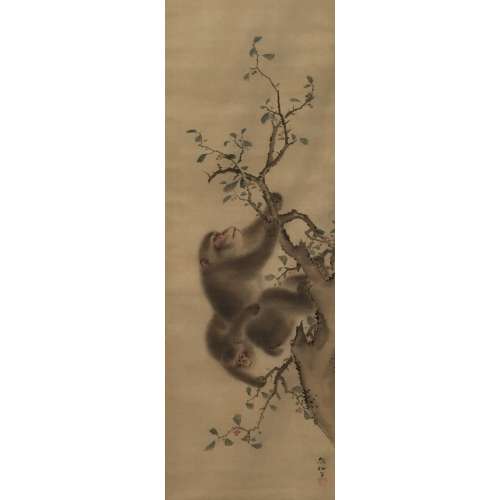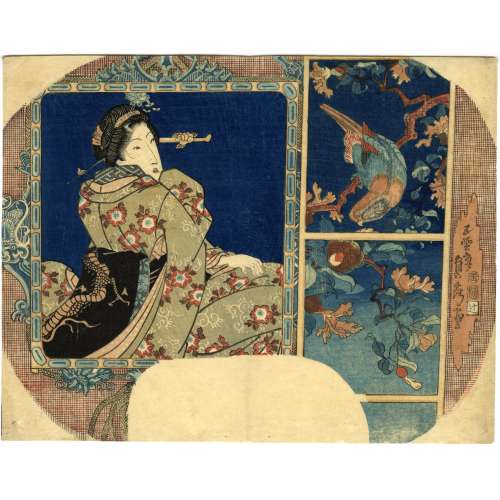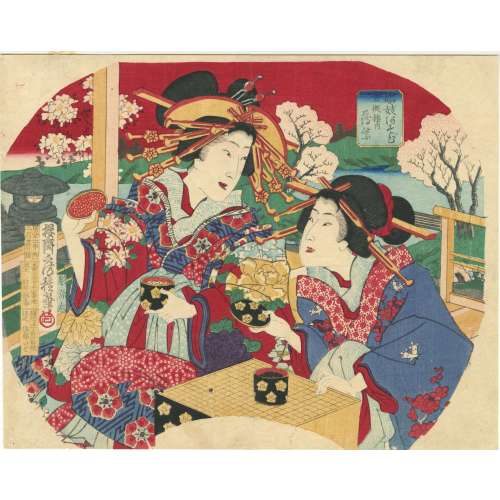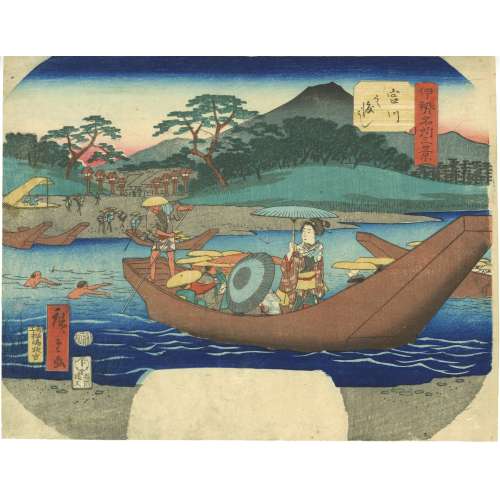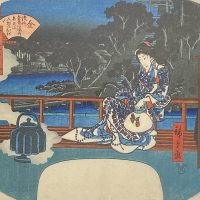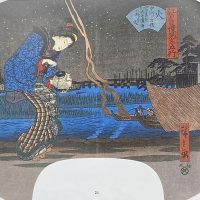Title: Modori Kago [戻駕] (Returning palanquin).
The dance-drama
Modori Kago Iro ni Aikata [戻駕色相肩] premiered in the 11th lunar month of 1788 at the
Nakamuraza [中村座], within
Sakurada Jisuke I's
kaomise [顔見世] (faceshowing) program
Tôzumô Hana no Edogata [唐相撲花江戸方]", which celebrated the homecoming to Edo, after two years' absence, of Nakamura Nakazō I, and was intended to show off his particular talents in the role of Jirosaku (in reality
Ishikawa Goemon [石川 五右衛門]) [
kabuki21]. The symbol on a green book cover is the informal crest of
tokiwazu-bushi [常磐津節] shaped like a water chestnut (
Eleocharis dulcis) lozenge. Artist signature 国盛画 (Kunimori ga) with red toshidama.
According to Samuel L. Leiter’s Kabuki Encyclopedia (1979), p. 243: The palanquin bearers Nanpa no Jirosaku and Azuma no Yōshirō, who are bearing a palanquin with a courtesan's young handmaiden in it, stop to rest at Kyoto's Murasakino, and each dances his regional dance. Then they call the girl, who does a dance showing the visitors to the famous pleasure quarters, Yoshiwara and Shimabara. The two men recognize each other as Ishikawa Goemon and Masashiba Hisayoshi, sworn enemies, and engage in a fight. This number is the only remaining section of an annual "faceshowing” (
kaomize) work with a plot based on the medieval chronicle called the
Toikōki. The full-length piece was called
Kara Sumō Hanaeda no Kata. It is one of the most famous
tokiwazu pieces and preserves the old-style Kabuki flavour. Nakamura Nakazō I played Jirosaku and Matsumoto Kōshirō IV was Yoshiro in the first production. The handmaiden was Matsumoto Komesaburō (probably Matsumoto Komasaburō I, an unknown actor [SV]).
According to Egenolf Gallery: This work was first performed in 1788 at the Edo Nakamura-za as the season’s first performance and featured Nakamura Nakazō, who returned to Edo after three years in Osaka. It was a dance with
tokiwazu chanting and was designed for him to play the lead role. In the piece, two palanquin carriers, one from Osaka, another from Edo, and a passenger – a kamuro, (a young geisha-in-training) exchange stories about the pleasure quarters of Shimabara and Yoshiwara. The text of the chanting book is open next to her, carrying the title “Collection of Practicing” [稽古尽くし], on which the green bundle cover carries the crest of Tokiwazu School, matsu-kawa-bishi, diamond variety of pine bark and the artist’s signature. Tokiwazu is a type of jōruri, narrative music, and accompanies dancing on the kabuki stage.
Ref.:
Christie's 27 Mar 2006.
Publisher: Maruya Jinpachi, seal Marujin (Marks: 12-029 | 294e)
Single
nanushi censor seal: Mura (Murata Sahei, 1842-46).
Provenance: Circular seal of the collector
Huguette Bérès to verso.
Contributors:
Utagawa Kunimori [
歌川国盛] (Japanese, fl. c. 1818 – 1943) – artist.
Maruya Jinpachi [丸屋甚八] (Japanese, fl. 1770 – 1842) – publisher.
Other mentioned:
Nakamura Nakazō I [中村仲蔵] (Japanese, 1736 – 1790); other names: Nakayama Kojūrō VI, Nakamura Ichijūrō, Nakayama Manzō – actor.
Matsumoto Kōshirō IV [松本幸四郎] (Japanese, 1737 – 1802); other names: Omegawa Kyōjūrō; Ichikawa Komazō II, Ichikawa Somegorô I, Ichikawa Takejūrō ; Segawa Kinji; Segawa Kingo – actor.
Sakurada Jisuke I [桜田治助] (Japanese, 1734 – 1806) – dramatist.



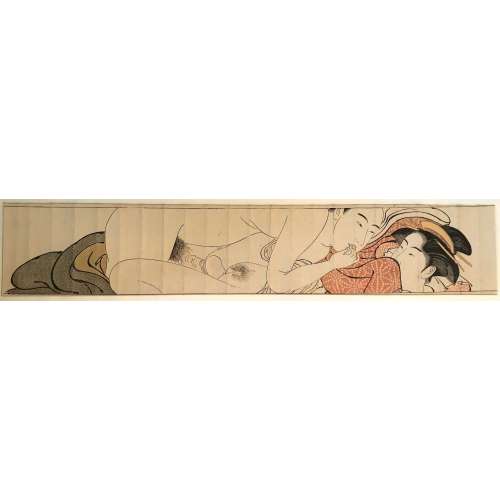




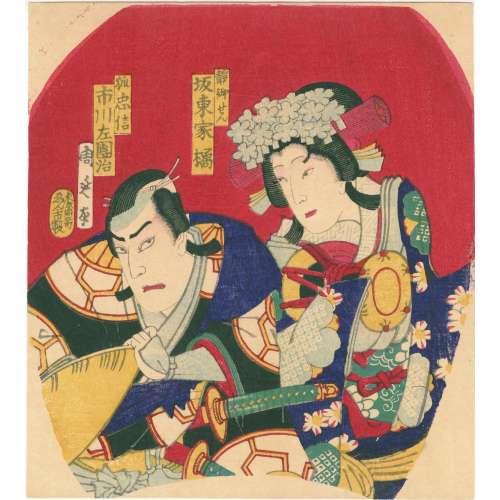




 (3) RISD Museum 34.334:
(3) RISD Museum 34.334:

